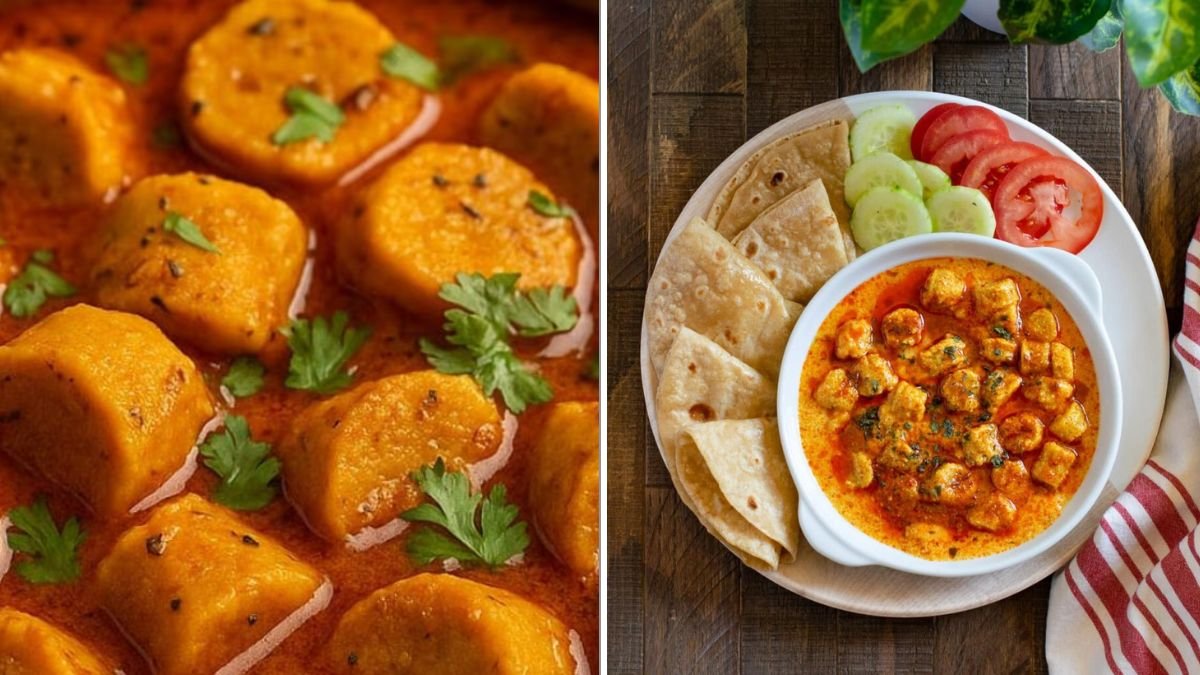Rajasthan is known for its rich heritage, royal architecture, and vibrant cuisine that celebrates flavor even in the harshest desert conditions. One of its crown jewels is Gatte ki Sabzi — a hearty, spiced curry made with chickpea flour (besan) dumplings simmered in a tangy yogurt-based gravy. What makes this dish truly special is that it requires no fresh vegetables — perfect for the dry climate of Rajasthan, where fresh produce was once scarce.
This dish is comforting, protein-packed, and bursting with bold Rajasthani flavors. In this 7-step guide, you’ll learn exactly how to prepare authentic Gatte ki Sabzi, Rajasthani style, with detailed instructions to ensure your curry turns out creamy, flavorful, and absolutely irresistible.
Step 1: Gather All Ingredients
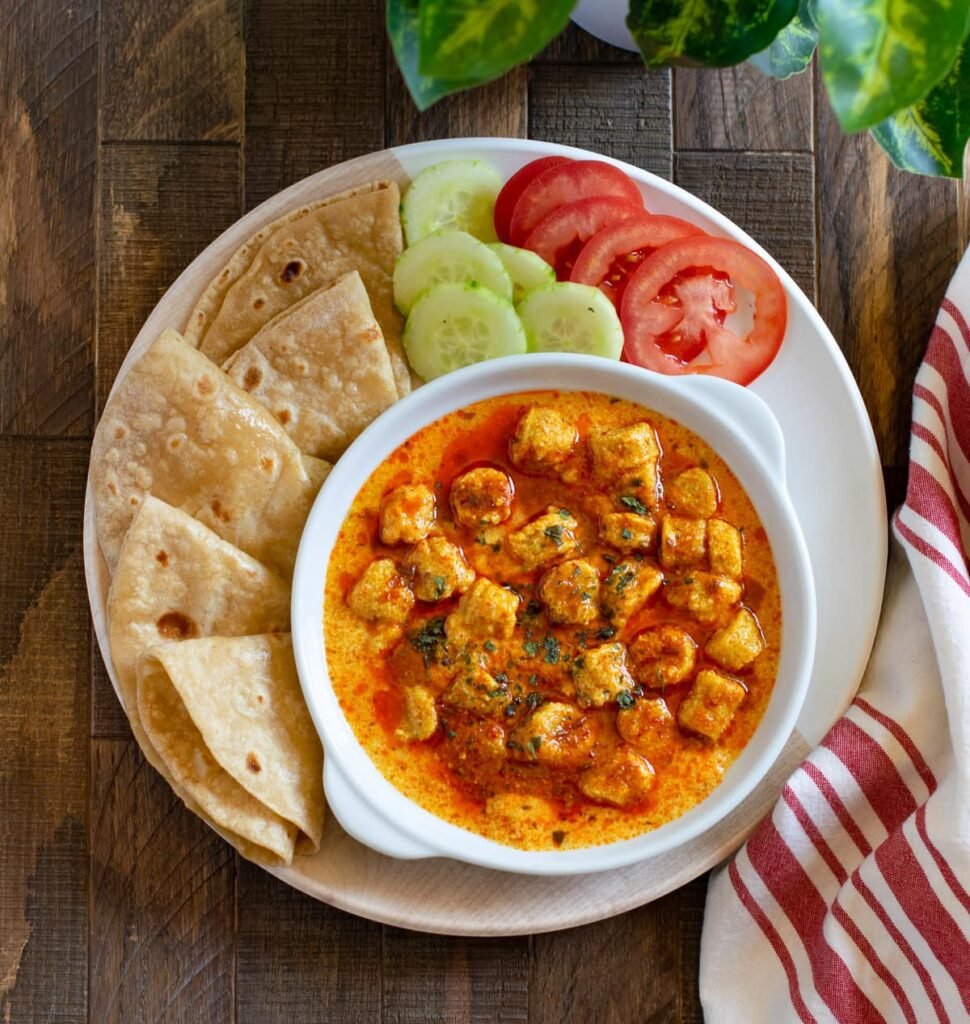
Before starting, make sure you have all the ingredients ready. Rajasthani cuisine is known for using simple, pantry-staple ingredients—so you won’t need anything fancy.
For the Gatte (dumplings):
- 1 cup gram flour (besan)
- 1 tablespoon semolina (optional, for firmness)
- 1 teaspoon carom seeds (ajwain)
- ½ teaspoon turmeric powder
- ½ teaspoon red chili powder
- A pinch of asafoetida (hing)
- 2 tablespoons yogurt (curd)
- 2 tablespoons oil
- Salt to taste
- Water, as needed
For the gravy:
- 2 tablespoons oil or ghee
- 1 teaspoon cumin seeds
- 1 teaspoon mustard seeds
- 1 pinch asafoetida (hing)
- 1 tablespoon gram flour (besan)
- 1 medium onion, finely chopped
- 1 teaspoon ginger-garlic paste
- 2 medium tomatoes, pureed
- 1 cup curd (yogurt), whisked
- ½ teaspoon turmeric powder
- 1 teaspoon coriander powder
- 1 teaspoon red chili powder
- 1 teaspoon garam masala
- Salt to taste
- 2½ cups water
For garnish:
- Fresh coriander leaves
- A dollop of ghee (optional)
Step 2: Prepare the Gatte Dough
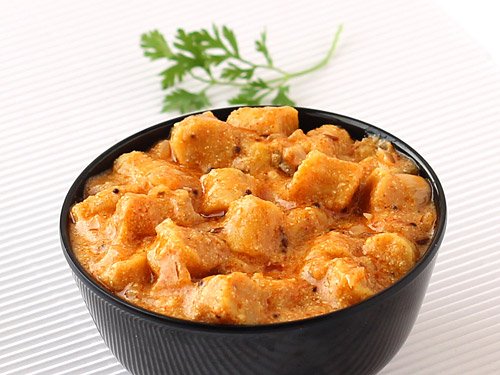
The gatte are the heart of this dish—soft, flavorful, and slightly chewy dumplings made from chickpea flour.
- In a large mixing bowl, combine gram flour, semolina, carom seeds, turmeric, chili powder, asafoetida, and salt.
- Add yogurt and oil. Mix with your fingers until the mixture becomes crumbly.
- Gradually add water, a few tablespoons at a time, and knead into a firm but smooth dough (not sticky).
The dough should be pliable like roti dough but a little firmer, so the gatte hold their shape when boiled.
Pro Tip: Adding oil and yogurt ensures that the gatte stay soft even after cooking in the curry.
Step 3: Shape and Boil the Gatte
Now it’s time to shape and cook the dumplings.
- Divide the dough into 3–4 equal portions.
- Roll each portion into a long, cylindrical log about the thickness of your thumb (6–7 inches long).
- In a wide pan, bring 4 cups of water to a rolling boil.
- Gently drop the dough logs into the boiling water and cook for 8–10 minutes or until they start floating to the surface.
This means they are cooked through.
- Remove them with a slotted spoon and place on a plate to cool slightly.
- Reserve the water you boiled them in—it’s full of flavor and will be used later in the curry.
- Once cooled, cut the logs into small bite-sized pieces (about ½ inch thick).
Tip: You can lightly pan-fry these boiled gatte in 1 tablespoon oil for a few minutes to enhance flavor and prevent them from breaking in the gravy.
Step 4: Prepare the Yogurt Base
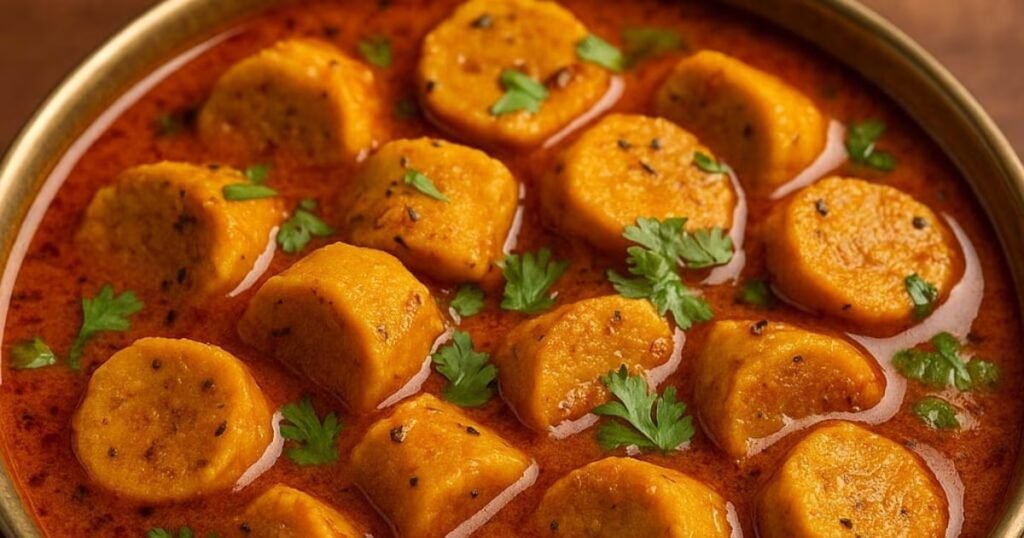
A signature of Rajasthani cuisine, the yogurt base provides a tangy, velvety richness that balances the earthy taste of chickpea flour.
- In a bowl, whisk together yogurt and 1 tablespoon besan until smooth.
- This prevents the yogurt from curdling when added to the hot pan.
- Add about ¼ cup of the reserved boiled water to loosen the mixture.
This creamy yogurt-besan blend will form the backbone of your curry’s texture and flavor.
Step 5: Cook the Masala for the Gravy
This step builds the flavor depth typical of Rajasthani dishes.
- Heat oil or ghee in a deep pan.
- Add cumin seeds, mustard seeds, and a pinch of hing. Allow them to crackle.
- Add chopped onions and sauté on medium flame until golden brown.
- Add ginger-garlic paste and cook for another minute until fragrant.
- Stir in the tomato puree and cook until the oil separates from the masala—this ensures the raw tomato flavor is gone.
- Add turmeric, coriander powder, and red chili powder. Mix well.
Your base masala should now be rich, aromatic, and ready for the next stage.
Step 6: Combine Yogurt Mixture, Water, and Gatte
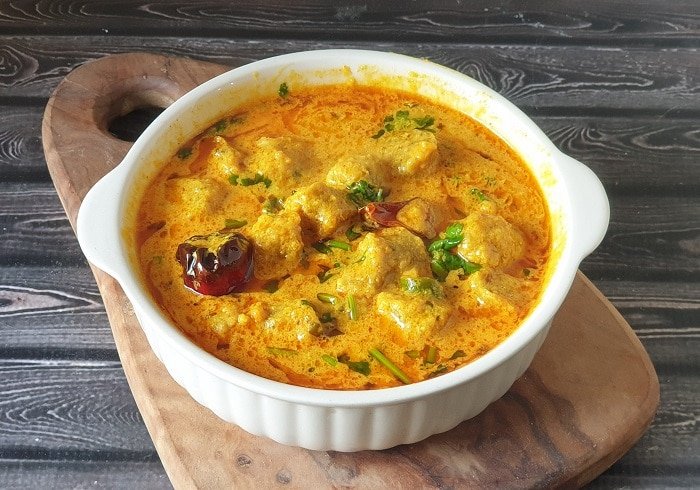
- Lower the heat and add the whisked yogurt-besan mixture slowly while stirring continuously to avoid curdling.
- Once incorporated, add about 2 cups of the reserved boiled water (adjust according to desired thickness).
- Stir well and bring the mixture to a gentle simmer.
- Add the boiled (or lightly fried) gatte pieces.
- Cook on low flame for 10–12 minutes, allowing the dumplings to absorb all the delicious flavors.
The gravy will thicken naturally as the besan cooks further, creating a creamy, hearty texture without the need for cream or nuts.
Finally, sprinkle garam masala and stir well.
Optional: Add a small spoon of ghee for that authentic Rajasthani aroma.
Step 7: Garnish and Serve Rajasthani-Style
Your Gatte ki Sabzi is now ready! Garnish with fresh coriander leaves and serve hot.
Serving Suggestions:
- Pair it with Bajra Roti, Missi Roti, or Chapati for an authentic Rajasthani thali experience.
- It also goes wonderfully with Jeera Rice or Plain Basmati Rice for a heartwarming lunch.
- Serve with Raita and Papad on the side for the perfect traditional combo.
Tips for Perfect Rajasthani Gatte ki Sabzi
- Control the consistency: The gravy should be medium-thick—not too watery or too dry. Add water gradually until it coats the gatte nicely.
- Yogurt temperature: Always lower the flame before adding yogurt to avoid splitting.
- Use ghee for flavor: If you’re not vegan, a spoon of ghee at the end takes the dish to the next level.
- Make it ahead: Gatte ki Sabzi tastes even better after resting for a few hours as the flavors meld beautifully.
- Add a spicy kick: Mix in ½ teaspoon of crushed fennel and dry chili flakes for extra Rajasthani flair.
Health Benefits of Gatte ki Sabzi
This dish isn’t just delicious—it’s also nutritious and protein-rich, especially for vegetarians.
- High in Protein: Besan (chickpea flour) is a great source of plant-based protein.
- Low in Fat: Since it’s made with yogurt instead of cream, it’s lighter yet filling.
- Gluten-Free: Perfect for those avoiding wheat-based dishes.
- Rich in Fiber: Keeps you full longer and aids digestion.
- Gut-Friendly: The yogurt adds probiotics for better gut health.
No wonder this dish has been a staple in Rajasthani households for generations!
Regional Variations to Try
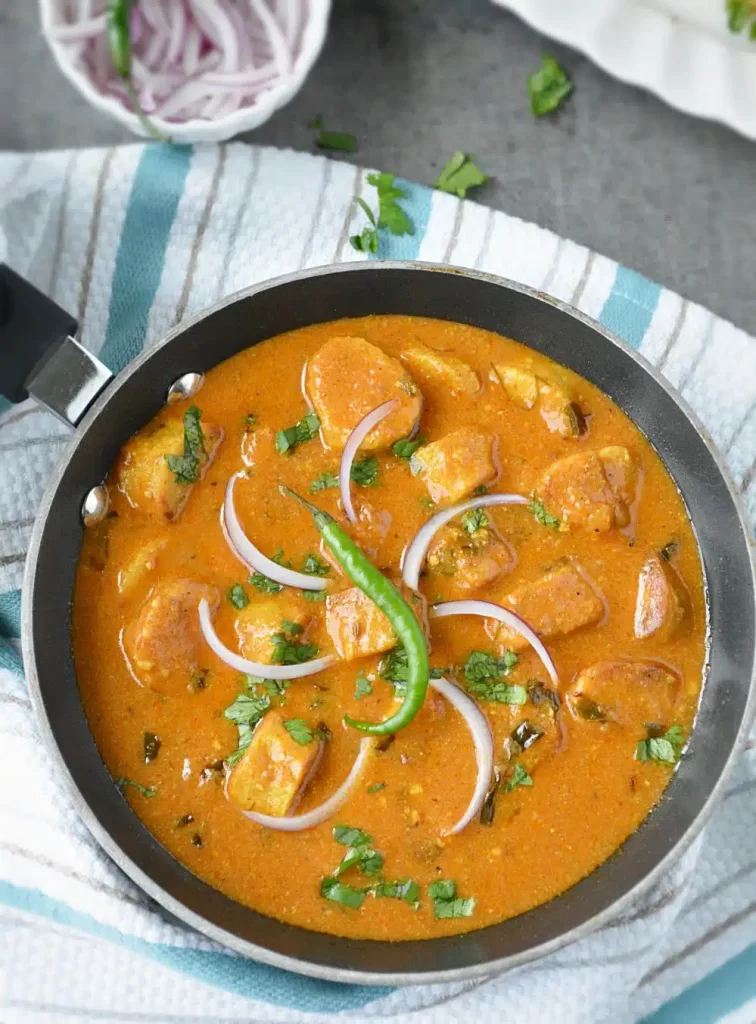
Rajasthan has a few delightful variations of Gatte ki Sabzi:
- Shahi Gatte: A royal version made with nuts, cream, and rich spices—served on special occasions.
- Masala Gatte: The gatte are fried instead of boiled, giving the curry a smoky flavor.
- Besan ke Gatte with Kadhi: A tangier, yogurt-based curry similar to kadhi but with dumplings instead of pakoras.
Each version offers a new twist while preserving the essence of Rajasthani culinary tradition.
Final Thoughts
Gatte ki Sabzi captures the heart of Rajasthani cuisine — simple ingredients transformed into something extraordinary through technique and spice. This 7-step guide shows how you can recreate this desert delicacy at home, even if you’re a beginner.
From the nutty aroma of roasted besan to the tang of yogurt gravy and the earthy spices that linger on your tongue, every bite tells a story of Rajasthan’s rich culinary legacy. Serve it with roti, rice, or bajra khichdi — and experience royal flavors straight from the desert land.
So, roll up your sleeves and bring a taste of Rajasthan to your kitchen with this authentic Gatte ki Sabzi—a dish that’s timeless, comforting, and utterly satisfying.
